 |
Viceroy Butterfly – Limenitis archippus Live viceroy and monarch butterflies photographed at DuPage County, Illinois. Family Nymphalidae Butterfly Main | Skippers | Butterfly Index |
|
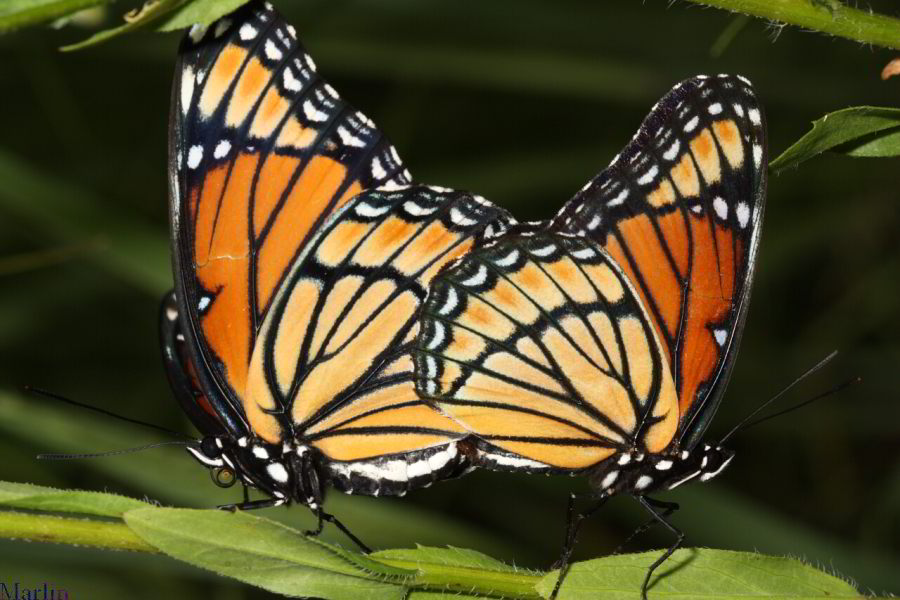
|
Male viceroys perch on vegetation and patrol a territory waiting for females. Copulation is accomplished tail-to-tail, with the much larger female "towing" the male around. I've seen viceroys flying in tandem with the female towing the male in a very rapid, straight-line flight across my field of view, a distance of many dozens of yards – they fly very well, connected.
Limenitis, the genus name, comes from the Latin for "marsh", but I often find viceroys in tall grass or weedy fields some distance from any water or swampy areas. |
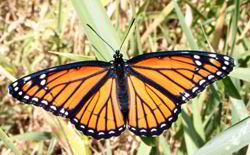 Viceroy Butterfly |
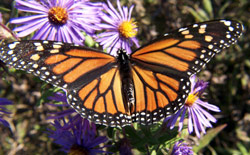 Monarch Butterfly |
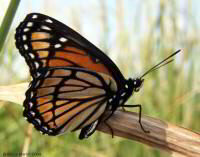 |
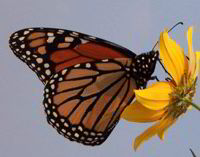 |
| La semejanza del Virrey al monarca no es el resultado de una estrecha relación genética. Vienen de diferentes subfamilias y tienen diferentes hábitos. |
|
The resemblance of the viceroy to the monarch is not the result of a close genetic relationship. They come from different subfamilies and have different habits (the monarch famously migrates, the viceroy not so much).
It is frequently noted that the Viceroy (a non-toxic butterfly) mimics the aposematic coloring of the supposedly toxic Monarch butterfly. However, recent research suggests this so-called Batesian mimicry may not be as simple as first thought. Viceroy caterpillars feed on trees and shrubs in the family Salicaceae, the willows (Salix), and polars (Populus), Salicylic acid, a precursor to acetylsalicylic acid (aspirin), is thus concentrated in their bodies, providing an extremely bitter meal for any would-be predator. Viceroy larvae are well-camouflaged as bird droppings, as are many moth caterpillars as well as adult moths. |
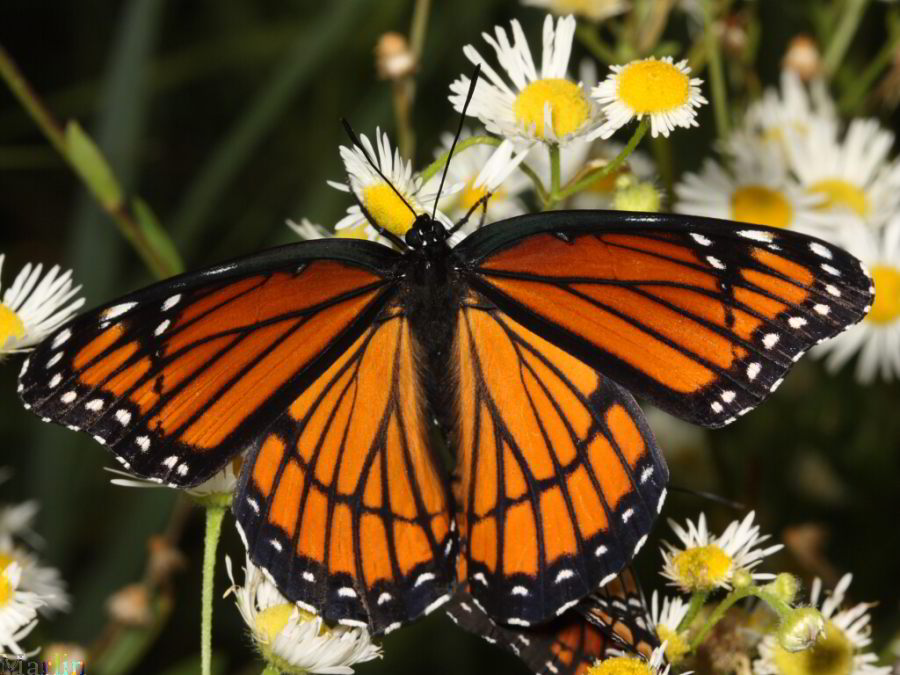 Female Viceroy Butterfly |
| Tree Encyclopedia / North American Insects & Spiders is dedicated to providing scientific and educational resources for our users through use of large images and macro photographs of flora and fauna. |
|
Order Lepidoptera, which contains both butterflies and moths, includes at least 125,000 known species including 12,000 in North America. Butterflies are revered for their brightly colored wings and pleasing association with fair weather and flowers. |
